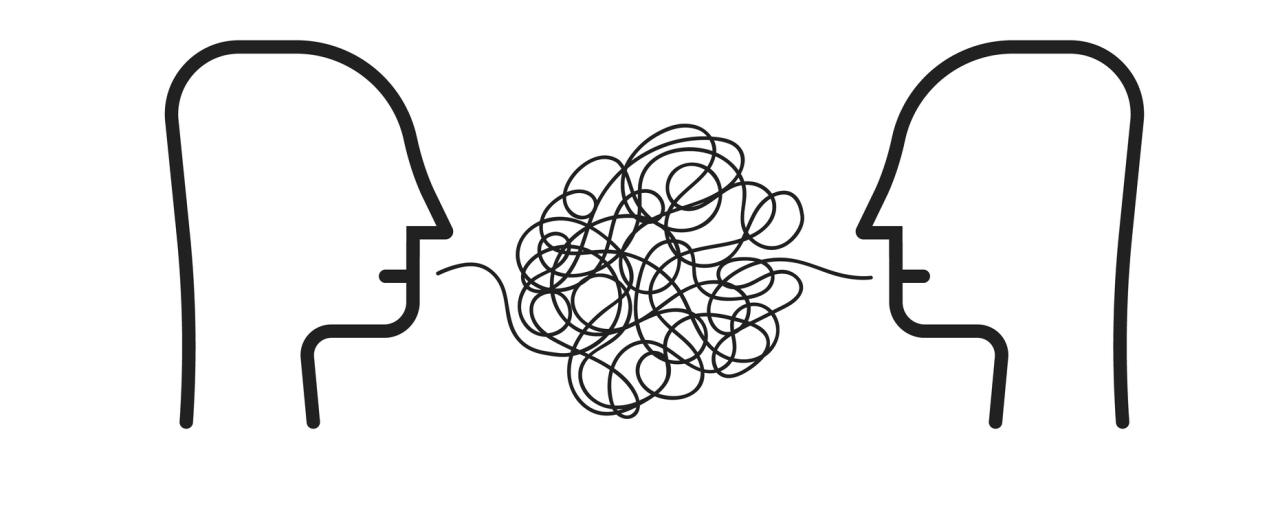
Even if individuals are highly motivated to work together, they aren’t always able to do so effectively. That's because communication remains a key challenge. The human ability to communicate what’s in the mind is miraculous; no other species does it with as much richness. Even so, we don't do it perfectly.
Communication is the grease that ensures an organisation runs like a well-oiled machine. Yet, miscommunication is persistent in our work and everyday lives. Miscommunication can range from harmless errors to tragic and costly ones. In 1999, NASA lost a US$125-million Mars orbiter spacecraft. The cause? NASA’s contractor had used English units of measurement for a key spacecraft operation, while NASA used the metric system. We each bring our own “codes” – languages, jargon and terminology – to a conversation, and if these are not the same, confusion and sometimes disaster ensues. But we can work towards becoming better communicators.
The many moving parts of communication
Communication problems tend to be complex. First, effective communication entails the interaction of many factors. The message sent by the sender interacts with how much the receiver already knows about it, whether the receiver understands the label attached to the subject, and whether the receiver can make the inference.
Second, communication is dynamic since it typically happens over time. Each time we attempt to communicate something, whether we succeed or fail, we change our understanding of the world. Learning takes place. If communication were a problem-solving game, the problem changes each time we play it.
This combination of interaction and dynamics further complicates communication. It is not simply a case of understanding language. In our study on how the nature of code differences shapes communication, we developed a model to capture both interactions and dynamics in a rigorous way to better understand communication problems. Instead of using our intuition to understand a complex problem, we depend on math – by studying the behaviour of a mathematical model in a computer program over time.
Decoding miscommunication
We compare communication problems arising from two broad types of code differences. The first type of difference arises between codes in mutually unfamiliar contexts, such as across functional departments that are likely to use different vocabularies and therefore different labels in their code. For instance, the phrase “zombie debt” is relevant for the debt collection department of a credit card business but may mean nothing to an IT worker – neither the label nor the concept is relevant.
The second type of difference arises across social groups within the same broad linguistic community and work environment. Speakers of the different codes use the same labels and are familiar with the same set of stimuli but map these differently, resulting in “jumbled codes”. For instance, one branch of a bank may use the term “attrition” for the departure of employees, whereas those in another use it to describe the loss of customers (using “turnover” instead for employee departure, which the first branch may use to refer to sales).
When working across different geographies, time zones, functional roles, and languages, these differences in communication codes are nothing new. What is not known, is whether these differences are the same or what kinds of differences have the biggest impact on communication. The model allows us to compare, as the two parties learn through trial and error, which types of code differences are harder to solve.
Not all code differences are the same
Our model predicts that in trying to tackle communication challenges, some differences are harder to resolve than others. In particular, we expect the problem to be trickier when people use the same word for different things (homonyms) rather than different words for the same thing (synonyms).
Prior studies indicate that when pilots attend training conducted in English, native English speakers may have a harder time than non-native speakers. Trainees who do not speak English learn the jargon of aviation from scratch, while native English-speaking trainees have been using these words in their own way. For instance, when the trainer uses the term “confirm”, English-speaking trainees would have already attached meaning to the word – one that might be different from its meaning in the aviation context. This same label for two different meanings can create potential confusion around whether it refers to a request to confirm or a confirmation in itself. On the other hand, this is not a problem for those who never had the word “confirm” in their language.
When codes are jumbled, code differences need to be overcome by unlearning prior associations that clash and forming new associations. This is what makes it harder for the native English-speaking pilots; the rest don’t face this issue. This implies that communication challenges in post-merger integration, buyer-supplier relationships, and research and development alliances may be less severe than in cross-functional collaboration within a firm. In the latter scenario, when the same set of labels is used for different things, unlearning is required.
Start with the basics: diagnosis
Since solutions to communication problems vary by context, there is no single easy solution or formula. Our model seeks to explain when we should expect communication breakdowns to be more (or less) persistent across organisational boundaries and what we can do about them. In practice, it enables a clear and rigorous way of thinking about a very complex problem and breaking it down into parts that can be better managed.
Ultimately, the takeaways for managers and practitioners would be to diagnose communication failures carefully. “Zombie debt” is less likely to be a problem than “confirm”. Beyond diagnosis, agreeing on words and what they mean, by means of developing a glossary, could be a way to integrate codes. Other interventions may include using interfaces such as translators when communicating and reducing the need for communication by modularising work.





No comments yet.